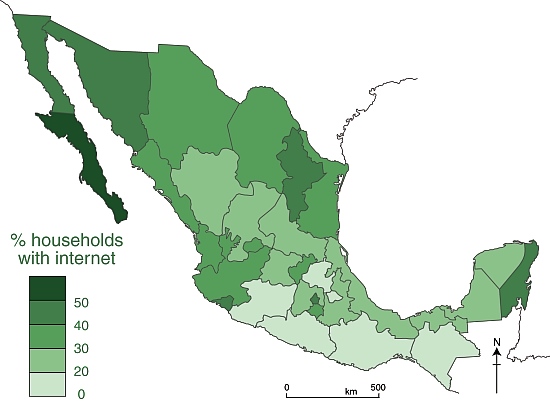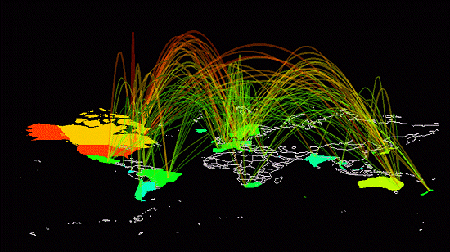In a recent post – Mexico’s internet connections and e-commerce – we looked at how 35.8% of Mexican households now have computers, 30.7% are now connected to the internet, and at the very rapid rise of e-commerce over the past few years.
How does internet access in Mexico compare to other countries? Comparative studies show that Mexico lags well behind almost all major countries in terms of internet access. Mexico’s rate of 30.7% of households with internet access compares poorly with other countries in Latin America such as Brazil (37.8%), Chile (37.8%) and Argentina (34.0%).
Among OECD member states, Mexico ranks bottom in terms of internet access. South Korea ranks top, with 97.2%. The Netherlands, Norway, Iceland, Luxembourg, Sweden and Denmark all have rates over 90%. Canada has a rate of 78.4%, the USA 71.1% and Japan 67.1%. The lowest ranking European countries are Turkey (41.6%), Greece (50.2%) and Portugal (58.0%).
Within Mexico, the rate of internet access varies widely from one state to another (see graph).
The disparities are evident from the graph, but the pattern becomes much clearer when the data are grouped and mapped:
The north-south divide in Mexico, that we have frequently referred to in previous posts, is immediately evident (with the notable exception of the easternmost state of Quintana Roo). Perhaps not surprisingly, there is a close correlation between GDP/capita in different states and their internet access.
Discussion question:
What other factors are likely to influence rates of internet access? To support, or challenge your ideas, try using Geo-Mexico’s map index to find maps to compare with the map of internet access.
Source of data:
- “Estadísticas a Propósito del Día Mundial de Internet” (pdf file) (INEGI 2014)
Related posts:
- How globalized is Mexico? (Aug 2013)
- The internet in Mexico: is there a digital divide? (Jun 2011)
- Mexico’s internet connections and e-commerce (May 2014)
- The pattern of farm sizes in Mexico: is there a north-south divide? (Feb 2014)
- Mexico’s north-south political divide persists, albeit with minor changes (Jul 2012)
- Mexico’s North-South economic divide weakens slightly in 2009 (Mar 2010)


